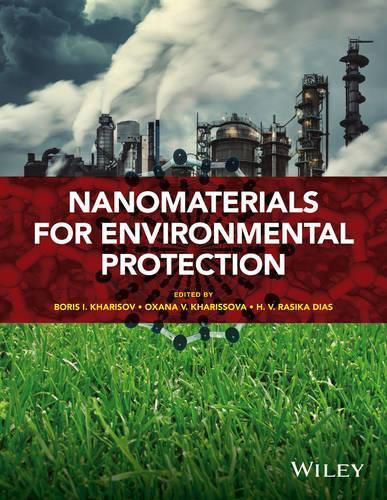Readings Newsletter
Become a Readings Member to make your shopping experience even easier.
Sign in or sign up for free!
You’re not far away from qualifying for FREE standard shipping within Australia
You’ve qualified for FREE standard shipping within Australia
The cart is loading…






This book is divided into four main sections thoroughly analyzing the use of nanomaterials for water, air and soil solutions, and emphasizing environmental risks. Providing background on nanomaterials’ two-decade study, it discusses the characterization and application of unconventional disinfectants, called antimicrobial nanomaterials, which fall into three categories and, while seemingly harmless, have potential hazards if applied improperly. Special attention is given to the process of remediation, synthetics techniques, and properties of nanomaterials, with examples to which new and trained readers in the field can relate and understand.
an interdisciplinary approach, aimed at scientists in physical chemistry, nanotechnology, and environmental sciences includes applications of non-conventional techniques in environmental protection furthers the development of applied nanoscience and nanotechnology suggests new industrial projects and university courses addressing nanotechnology in and for the environment includes applications for water, air and soil protection
$9.00 standard shipping within Australia
FREE standard shipping within Australia for orders over $100.00
Express & International shipping calculated at checkout
This book is divided into four main sections thoroughly analyzing the use of nanomaterials for water, air and soil solutions, and emphasizing environmental risks. Providing background on nanomaterials’ two-decade study, it discusses the characterization and application of unconventional disinfectants, called antimicrobial nanomaterials, which fall into three categories and, while seemingly harmless, have potential hazards if applied improperly. Special attention is given to the process of remediation, synthetics techniques, and properties of nanomaterials, with examples to which new and trained readers in the field can relate and understand.
an interdisciplinary approach, aimed at scientists in physical chemistry, nanotechnology, and environmental sciences includes applications of non-conventional techniques in environmental protection furthers the development of applied nanoscience and nanotechnology suggests new industrial projects and university courses addressing nanotechnology in and for the environment includes applications for water, air and soil protection